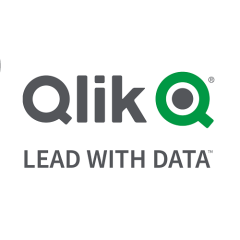I do use both Tableau and QlikView. Although very different, I really like both solutions. They belong to the new BI generation known as Interactive Visual Analytics.
In my opinion, QlikView has a more intuitive interface for regular users or executives that are not technical experts but the development side is a little more complex. Up to version 12 QlikView did not provide drag & drop features.
If a user wanted to see something not included in the application the new object had to be created by a power user or developer because Qlikview's scripting has somewhat of a learning curve.
On the positive side, QlikView's scripting is a great asset as it functions as an ETL allowing the integration of hundreds of different data sources into the same visual app.
Another feature that’s extremely useful is Qlik’s proprietary Associative Model that allows the users to visualize data relationships that exist as well as those that do not.
Tableau on the other hand is a lot easier to use for developers, analysts or power users who need to connect, manipulate and visualize data rather quickly. While this makes Tableau a better fit for the more analytical crowd, it may not be as appealing or intuitive to the regular or casual business users as QlikView is.
Tableau has full pivot, drag & drop and drill down capabilities that are great for developers or power users. They can rotate measures and dimensions and graph them instantly using visualization best practices as suggested by the "show-me" feature.
Tableau’s provides a forecasting function and the capability to connect with the open source statistical program R to include predictive modeling.
Tableau includes a Data Interpreter that makes data cleansing, column splitting and crosstab pivoting very intuitive. Tableau’s latest versions allow joining tables from different data bases and have included the hyper data engine that provides 5 times faster query speeds.
The latest version includes "relationships" with an algorithm that makes
the necessary data connections automatically with no need to perform joins or add Level of Detail scripts (LOD) to eliminate duplicates. However one can still create joins to override relationships if for some reason it was necessary.
Also when opening older files containing joins they are kept under a
"migrated data base" or the migrated joins can be deleted to be replaced with simpler automatic relationships. Tableau releases updated versions once a quarter.
Both Tableau and Qlik continue to be excellent. They are positioned at the top of the leader's quadrant in Gartner's 2022 Magic Quadrant report for BI and Analytics platforms.
https://powerbi.microsoft.com/...
In my experience the choice depends on the fit with the company culture and the users' profile.
Qlik introduction of their new platform called “Qlik Sense” provides intuitive drag & drop functionality to create visualizations. At this point Qlik Sense Desktop is free for personal and small group of cloud business users that need to easily develop analytic applications on their own - with virtually no IT intervention.
Recently Tableau has moved to a subscription based model but still offers free products: Tableau Public and Tableau Reader to ease the user entry process.
It certainly seems like Qlik Sense is an attempt to regain some of the impressive growth Tableau has enjoyed during the last few years playing in the truly self-service visual BI segment.
Disclosure: My company does not have a business relationship with this vendor other than being a customer.



















Performance of an application depends on Solution Design + Architecture design. In past 12 Years I have seen, whenever Performance issue is reported there are data-model redesign is required & after applying best practices performance issue has resolved, in few cases Architectural improvements have resulted into better performances.
Prashant P Baste | Sr. Solution Architect